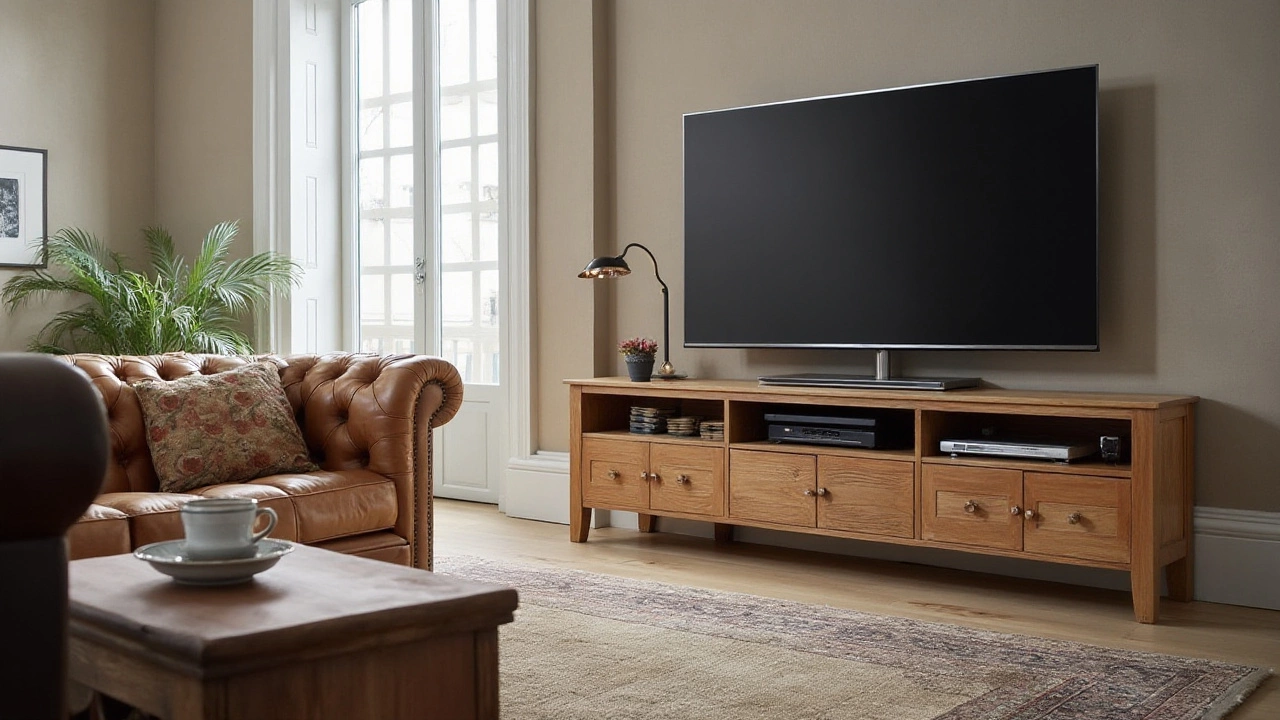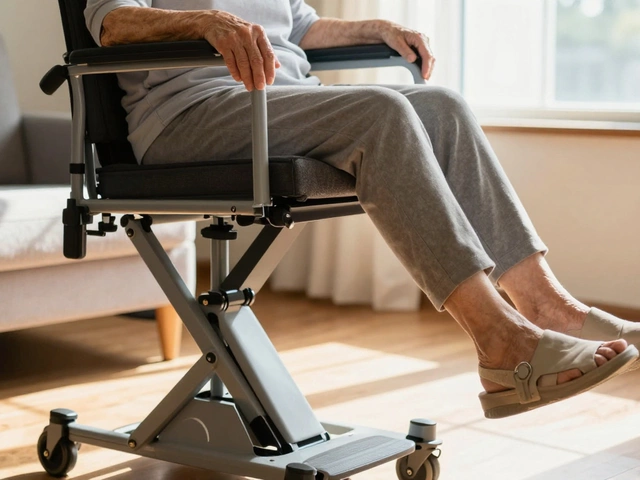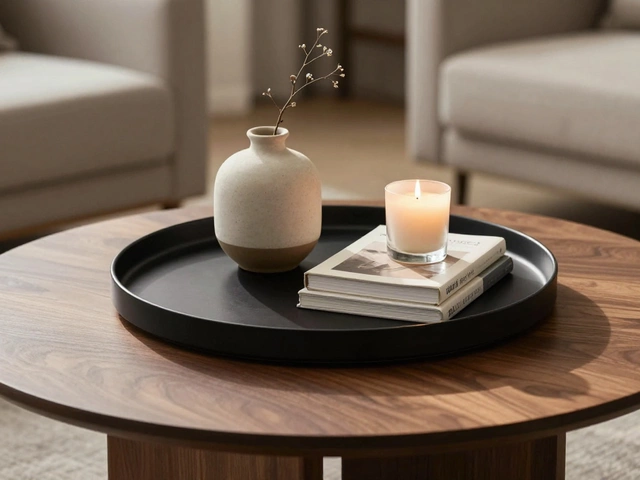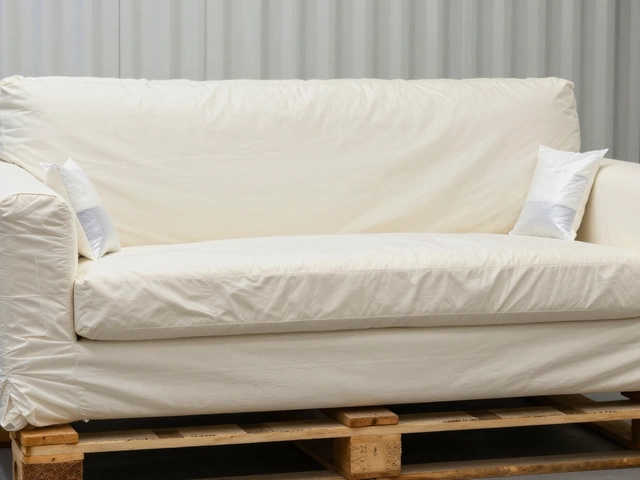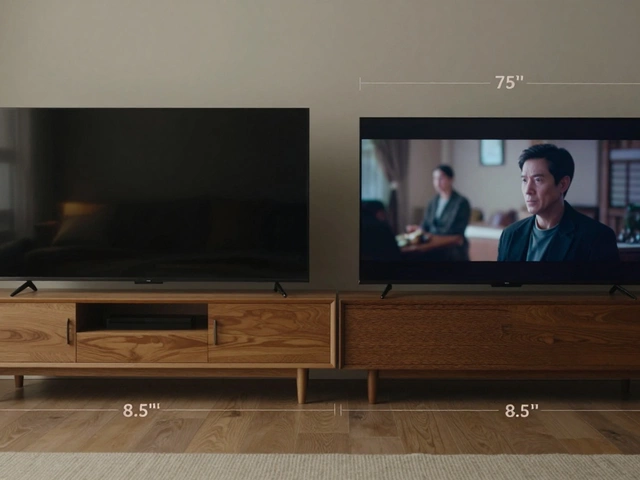Choosing the right stand for your Samsung TV can sometimes feel like piecing together a puzzle. As TVs become more advanced with each passing year, even the humble TV stand has evolved to complement these sleek screens. But does that mean you can use the same stand for all Samsung TVs? Let's dive into what makes each stand unique and what you should know before making a selection.
This journey will uncover the intricacies of Samsung's approach to TV stand design. From shape and size to model-specific details, there’s more to know than meets the eye. We’ll explore the reasons behind these design choices and how they impact TV stand compatibility across various Samsung models.
It's essential to consider specifications and design when selecting a TV stand. Some buyers find themselves caught off guard when discovering their new stand doesn’t quite match up. Read on to find out practical tips for selecting a stand that suits your TV's needs perfectly.
- Understanding Samsung TV Stand Design
- Compatibility of Different Models
- Why Checking Specifications Matters
- Tips for Choosing the Right Stand
Understanding Samsung TV Stand Design
The design of Samsung TV stands is a compelling blend of practicality and style, tailored to meet the diverse needs of modern consumers. Each stand isn't just a utilitarian appendage that supports your television; it is also a meticulously crafted component that harmoniously blends with the overall aesthetic of the device. Samsung has made strides in crafting stands that offer stability and elegance, reflecting the sleek nature of their televisions. It's essential to acknowledge that not all stands are created equal, varying considerably in terms of dimensions, weight capacity, and connection types to accommodate the wide array of television models produced by the company.
Historically, TV stands served a single purpose: to support the weight of a television securely. Today, Samsung integrates innovative designs that also offer cable management solutions, thereby reducing clutter and enhancing the visual appeal of your entertainment space. There's a variety of stand designs to choose from, including the widely recognized V-shaped and single-pedestal models. Each has its advantages and fitting specifications, primarily dictated by the television's weight, size, and intended aesthetic fit. These specifications are crucial for ensuring stability and preventing any potential mishaps from occurring.
The Role of Innovation in Stand Design
Innovation plays a key role in how Samsung crafts its TV stands. The goal is to not only offer physical support but also to enhance the user's viewing experience. For instance, some Samsung TV stands come with a swivel feature, providing the flexibility to adjust the viewing angle without having to move the entire television. This versatility is especially beneficial in spaces where seating arrangements vary or shift regularly. Moreover, some stands incorporate elements of height adjustment, allowing users to modify the height of the TV according to personal preferences. This can be particularly useful for optimizing TV height when wall mounting isn't an option.A Samsung spokesperson once noted, "Our approach to TV stand design is rooted in understanding the varied environments our customers live in. We strive to create stands that contribute not only to the functionality of the TV but also to the ambiance of the room."
Beyond functional design elements, aesthetics play a crucial role in Samsung's approach. TV stands are available in various finishes, from glossy blacks and silvers to metals and woods, enabling them to blend seamlessly with different interior styles. This attention to detail not only elevates the living space but also complements the television's bezel and screen, creating a unified viewing masterpiece.
Considerations for Compatibility and Future Trends
When selecting a Samsung TV stand, understanding its compatibility with your specific TV model is paramount. While some stands may appear similar, minute differences in the distance between mounting holes or the shape of the connection could mean the difference between a secure fit and an impractical one. Referring to the television's manual or consulting Samsung's customer support can provide clarity and assurance.Looking ahead, as televisions continue to evolve, becoming thinner and more advanced, the trend in TV stand design is likely to follow suit. Expect to see even sleeker supports, possibly incorporating smart technology that can interact with the TV system itself. This futuristic vision aligns with the current trajectory of maximizing both the aesthetic beauty and functionality of home entertainment centers. In a rapidly changing environment, Samsung remains at the forefront, ensuring that their TV stands not only meet but exceed consumer expectations.
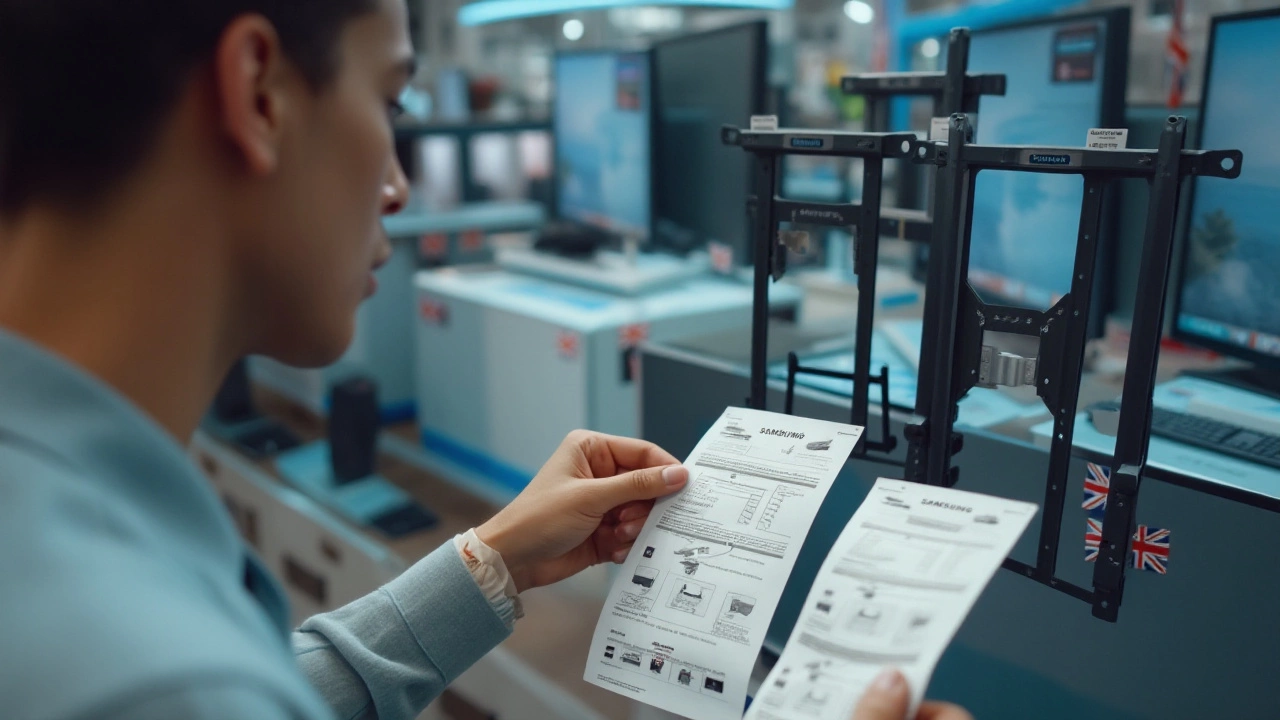
Compatibility of Different Models
When stepping into the world of Samsung televisions, one quickly realizes the vast variety of models available. Each model seems to boast its own unique features, from screen resolution to smart capabilities, and yes, even the Samsung TV stand. Compatibility between different Samsung TV models is, surprisingly, not as straightforward as one might hope. While you might think that a stand from a last year's model could fit this year's design, the reality is that the dimensions and fittings often vary greatly. Samsung tends to tailor its TV stands to match specific models, ensuring that the aesthetics and stability are both spot on.
Let's dive deeper into why there's such a mix of compatibility. To start, TVs are not all designed with a universal base or mounting system. This non-uniformity is partly due to shifting aesthetic trends and the scientific study of ergonomics, both of which guide Samsung’s decisions. For instance, the popular QLED and OLED series might have different stand designs because the panels are distinct in weight distribution and thickness. It's not uncommon for larger screens, which require more support, to have wider stands for stability. The company's design philosophy plays heavily into this as well, aiming for a seamless look that some might say borders on artistry.
An industry insider once said, "Think of the TV and stand as a married couple. They complement each other in every way, from strength to style." This vision highlights how tailored each model’s stand can be.
As a rule of thumb, when considering compatibility, always refer back to the TV’s model number and specifications. A size match isn’t the only prerequisite; holes for the screws, the VESA mounting pattern, and even the distance between points of contact can differ from model to model. Typically, Samsung organizes its line-up into series like the Crystal UHD, QLED, and Frame TVs, and these series often retain some level of consistency within themselves, but cross-series compatibility is almost non-existent.
For those who might get adventurous with rearranging their living spaces or upgrading individual components, understanding the layout of their TV model becomes crucial. A handy tip would be to keep the product manual or specifications sheet of any Samsung TV you own. This document often has a section dedicated solely to compatibility with stands and wall mounts. By maintaining this habit, you save yourself from future headaches.
Before we wrap up this section, it’s also worth mentioning the market for third-party stands and mounts. As Samsungs continue specializing their models, many cost-conscious consumers turn to alternative brands for stands. These brands frequently design products compatible with multiple models, but diligence is required here too. Always ensure the third-party stand aligns with the VESA measurements and check reviews before purchasing. The intricate dance of technology and art in TV designs makes this simple step essential for a perfect fit.

Why Checking Specifications Matters
When purchasing a television, the primary focus is often on the screen size, resolution, or smart capabilities. However, an equally important aspect that’s sometimes overlooked is the stand it sits on. Each Samsung TV stand has its own set of specifications that determine compatibility with different models. For instance, the bolt pattern, or VESA pattern, on the back of the TV can vary according to screen size and model type. This pattern dictates how the TV will attach to its stand or wall mount. Failing to check these specifications can lead you to buy a stand that simply doesn't fit, leaving you with an unusable product or the hassle of returning it.
As TVs grow larger, their stands evolve to ensure stability. This becomes crucial in preventing tipping or wobbling, particularly if you've got children or pets around. The base size and shape of a TV stand may be tailored to the unique geometry of a specific Samsung model. Even within Samsung's range, models have their quirks—some feature a central pedestal stand while others rely on dual feet at either end. This variance is often due to the weight distribution and the center of gravity of the TV, which is why a tailored fit can’t be stressed enough.
The Importance of VESA Compatibility
VESA patterns are a universal standard that dictate the location of mounting holes on the back of the television. These standards provide a blueprint for where your stand will attach. However, not every Samsung television adopts a standardized VESA pattern. Some models, especially older or uniquely designed ones, might have special requirements. Imagine bringing home that perfect entertainment centerpiece only to find it won't fit your TV because of mismatched VESA configurations. Hence, always verify these specifics first.
"While many think of VESA as universal, not every TV subscribes to these norms," says Mark Thompson, a home electronics expert at TechSavvy. "It pays to check twice before you purchase a stand or wall mount."
Realistically, the specs aren't just about sizes and connectors. They cover a range of attributes from material quality to load-bearing capacity. Opting for a stand without evaluating these aspects might lead to an unsatisfactory setup, or worse, a damaged TV. If you're switching stands across different TV models, knowing whether they can bear the TV's weight and dimensions is critical.
| Specification | Implication |
|---|---|
| VESA Pattern | Determines attachment fit |
| Weight Capacity | Ensures stability and safety |
| Base Shape | Stability and aesthetic design |
| Materials Used | Durability and longevity |
Inflation of technical specs might seem tedious, but they play a pivotal role in your TV setup. Investing the time to verify and understand these details can prevent significant headaches down the road. Make sure to cross-reference the specifications of your TV with those of the stand you're considering, and you'll ensure a seamless, safe, and satisfying viewing experience.

Tips for Choosing the Right Stand
When it comes to choosing the perfect stand for your Samsung TV, there are several factors that you should carefully consider. The fit of your TV stand can affect not only the aesthetics of your setup but also the practical functionality. Start by examining the size and weight specifications of your TV. These details are crucial as Samsung TVs vary significantly across models. The television's base must align smoothly with the stand to ensure stability and safety. Pay close attention to these measurements to avoid the hassle of returns or mismatches.
Equally important is to look at the style and design of the stand. Samsung televisions are known for their sleek, modern appearances, and finding a stand that complements this design is essential. You might consider whether you prefer a stand with a minimalist look or one that provides additional storage space for your media devices. TV mounting options can vary, so also think about whether you want a stand that offers a fixed display or one with tilt and swivel functionalities for flexible viewing angles.
Material quality is another critical aspect. Stands are crafted from various materials, including wood, metal, and glass, each offering different aesthetics and durability levels. Wood often presents a classic look, while metal tends to appear contemporary and sleek. Glass can add a touch of elegance but demands careful handling and maintenance. Before committing to a purchase, inspect reviews and consumer reports that highlight the durability of different stand types.
According to Home Entertainment Magazine, "A quality TV stand is not only about appearance. It’s about supporting and preserving your TV in the long run."
Exploring compatibility is essential, particularly if you're considering reusing an existing stand. Check for any additional hardware requirements, such as screws or brackets, which might be model-specific. Design standards change over time, and new Samsung TV stand models might not align with older television sizes. Thus, cross-referencing your TV model with the stand's specifications is a wise move before making any selections.
Budget is always a consideration, and the price range for Samsung TV stands can vary widely. Setting a budget beforehand helps narrow your options and prevents overspending. Remember that a higher price does not always equate to better quality. Online reviews and price comparisons can offer insight into the functionality and reliability of a stand in your price range. Keep an eye out for deals especially during holiday sales where electronics and accessories often see significant discounts.
A final but equally vital step is considering the long-term placement of your TV setup. The location of your TV will dictate the type of stand or mounting system you'll need. If your TV will be in a high-traffic area, a stand with built-in cable management features is invaluable for keeping cords and wires organized. This not only helps maintain a neat appearance but also increases safety by reducing tripping hazards.

